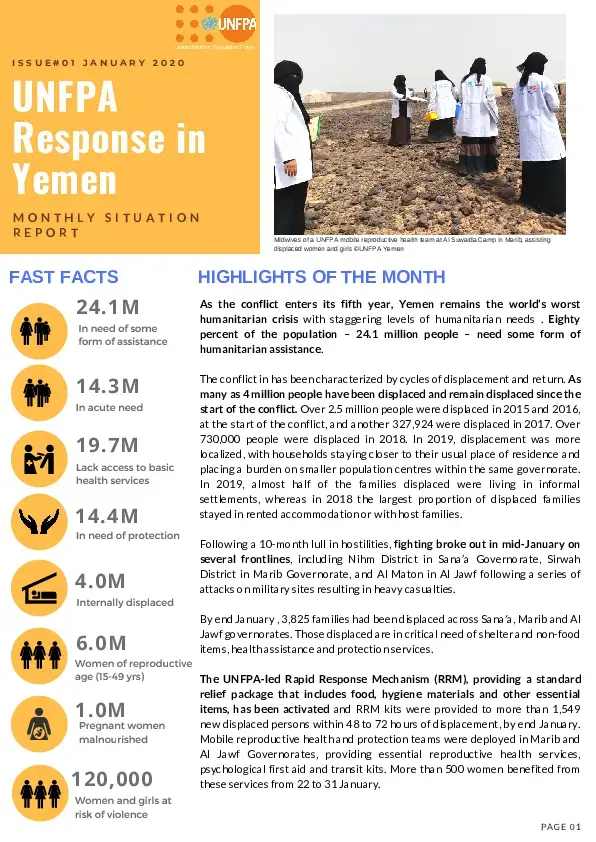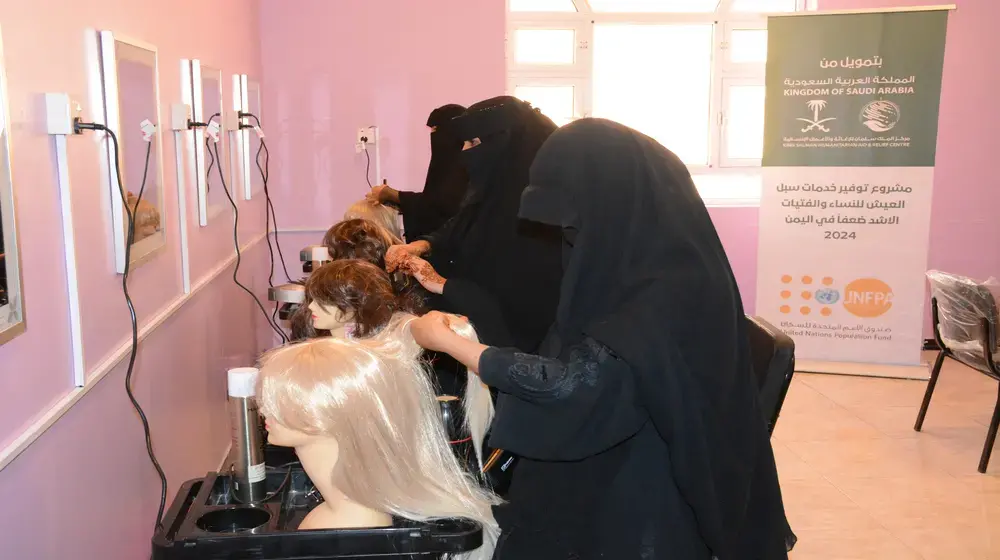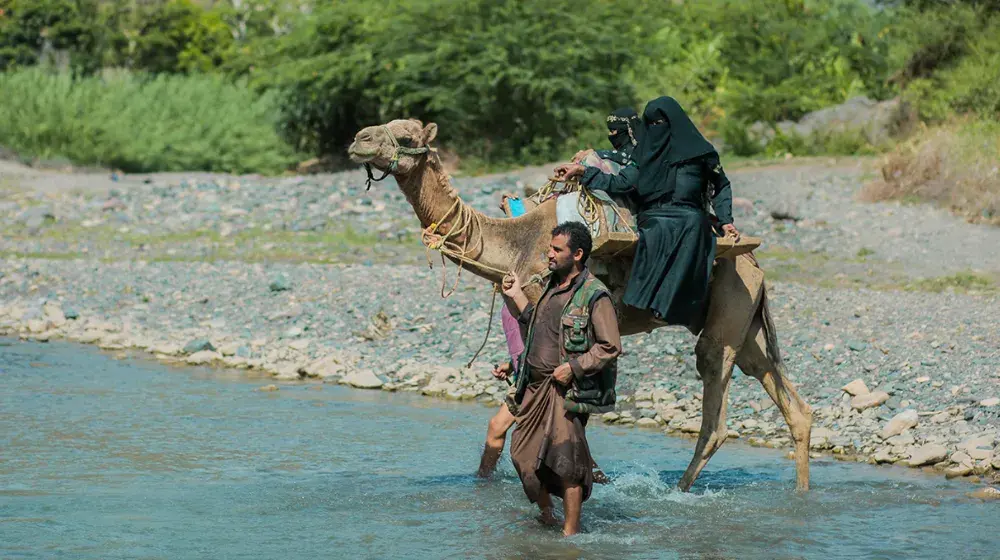As the conflict enters its fifth year, Yemen remains the world’s worst humanitarian crisis with staggering levels of humanitarian needs . Eighty percent of the population – 24.1 million people – need some form of humanitarian assistance.
The conflict in has been characterized by cycles of displacement and return. As many as 4 million people have been displaced and remain displaced since the start of the conflict. Over 2.5 million people were displaced in 2015 and 2016, at the start of the conflict, and another 327,924 were displaced in 2017. Over 730,000 people were displaced in 2018. In 2019, displacement was more localized, with households staying closer to their usual place of residence and placing a burden on smaller population centres within the same governorate. In 2019, almost half of the families displaced were living in informal settlements, whereas in 2018 the largest proportion of displaced families stayed in rented accommodation or with host families.
Following a 10-month lull in hostilities, fighting broke out in mid-January on several frontlines, including Nihm District in Sana’a Governorate, Sirwah District in Marib Governorate, and Al Maton in Al Jawf following a series of attacks on military sites resulting in heavy casualties. By end January , 3,825 families had been displaced across Sana′a, Marib and Al Jawf governorates. Those displaced are in critical need of shelter and non-food items, health assistance and protection services.
The UNFPA-led Rapid Response Mechanism (RRM), providing a standard relief package that includes food, hygiene materials and other essential items, has been activated and RRM kits were provided to more than 1,549 new displaced persons within 48 to 72 hours of displacement, by end January. Mobile reproductive health and protection teams were deployed in Marib and Al Jawf Governorates, providing essential reproductive health services, psychological first aid and transit kits. More than 500 women benefited from these services from 22 to 31 January





